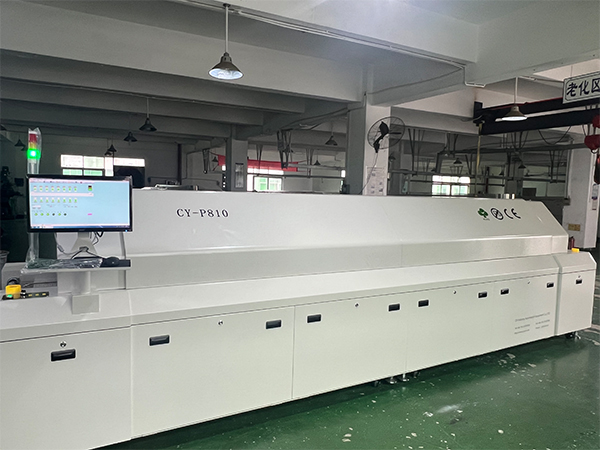-
The importance of PCB solder paste printers in electronics manufacturing
In the world of electronics manufacturing, the use of printed circuit boards (PCBs) is crucial in manufacturing the vital electronic components that power our everyday devices. A key element of PCB assembly is the application of solder paste, which is used to adhere electronic components to the c...Read more -
Benefits of using a solder stencil printer for electronic work
If you’re in the electronics industry, you know the importance of precision and accuracy. A solder stencil printer is a tool that can greatly improve the quality of your work. This device is a game changer for anyone involved in electronics manufacturing or assembly. In this blog, we’ll exp...Read more -
The Importance of Using a Solder Paste Stencil Printer
In electronics manufacturing, the use of solder paste stencil printers is critical to producing high-quality and reliable electronic products. This technology plays an important role in the soldering process as it helps ensure that the solder paste is accurately applied to the circuit board. In t...Read more -
How to achieve better soldering results with lead-free reflow soldering
The lead-free reflow soldering temperature is much higher than the lead-based reflow soldering temperature. The temperature setting of lead-free reflow soldering is also difficult to adjust. Especially because the lead-free soldering reflow process window is very small, the control of the lateral...Read more -
Reasons for poor cold welding or wetting caused by lead-free reflow welding
A good reflux curve should be a temperature curve that can achieve good welding of various surface mount components on the PCB board to be welded, and the solder joint not only has good appearance quality but also good internal quality. In order to achieve a good lead-free reflow temperature curv...Read more -
Importance of Using Solder Stencil Printers in Electronics Manufacturing
In electronics manufacturing, precision and accuracy are key factors in producing high-quality products. A key tool that helps manufacturers achieve this level of accuracy is the solder stencil printer. This important piece of equipment accurately applies solder paste to the PCB, ensuring proper ...Read more -
Maximizing Efficiency with Wave Soldering Machines
In the fast-paced world of electronics manufacturing, efficiency is key. As technology continues to advance rapidly, companies must find ways to streamline their production processes to meet demand and stay ahead of the competition. An important tool for achieving this is a wave soldering machine...Read more -

Process characteristics of reflow soldering compared with wave soldering
Lead-free wave soldering and lead-free reflow soldering are necessary soldering equipment for the production of electronic products. Lead-free wave soldering is used to solder active plug-in electronic components, and lead-free reflow soldering is used to solder source pin electronic components. ...Read more -

Operating requirements for lead-free wave soldering equipment
The work of the lead-free wave soldering equipment begins with the plug-in circuit board being transported by the chain conveyor belt. It is first preheated in the preheating area of the lead-free wave soldering equipment (the component preheating and the temperature to be reached are still deter...Read more -

How to set lead-free reflow soldering temperature
Typical Sn96.5Ag3.0Cu0.5 alloy traditional lead-free reflow soldering temperature curve. A is the heating area, B is the constant temperature area (wetting area), and C is the tin melting area. After 260S is the cooling zone. Sn96.5Ag3.0Cu0.5 alloy traditional lead-free reflow soldering temperatu...Read more -

Factors affecting uneven heating of lead-free reflow soldering
The main reasons for uneven heating of components in the SMT lead-free reflow soldering process are: lead-free reflow soldering product load, conveyor belt or heater edge influence, and differences in heat capacity or heat absorption of lead-free reflow soldering components. ①The impact of differ...Read more -

Factors causing poor reflow soldering quality
① Consider the quality of PCB. If the quality is not good, it will also seriously affect the soldering results. Therefore, the selection of PCB before reflow soldering is very important. At least the quality must be good; ②The surface of the welding layer is not clean. If it is not clean, the wel...Read more

